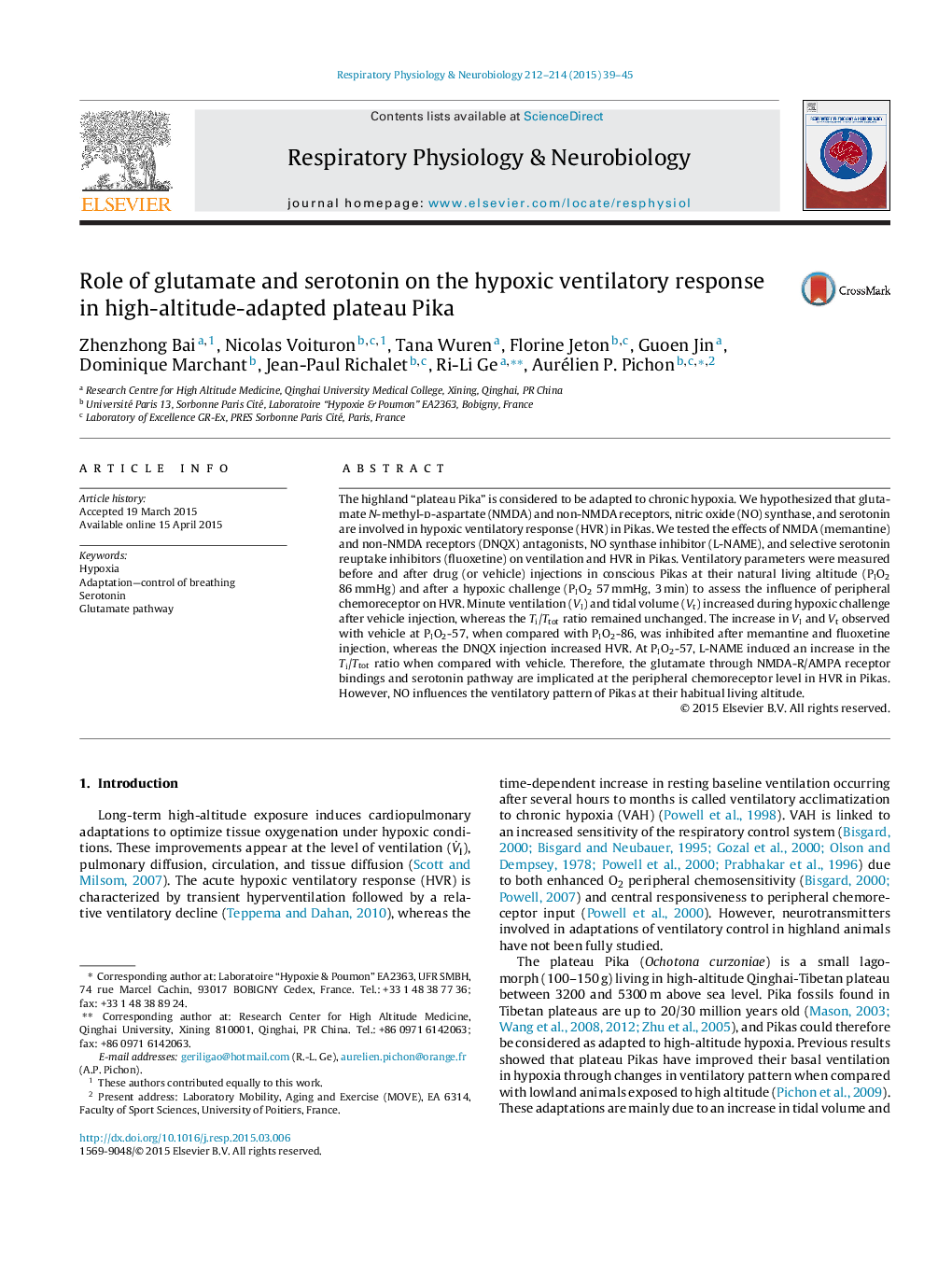| کد مقاله | کد نشریه | سال انتشار | مقاله انگلیسی | نسخه تمام متن |
|---|---|---|---|---|
| 2846802 | 1571316 | 2015 | 7 صفحه PDF | دانلود رایگان |

• “Plateau Pika” is a high-altitude native animal.
• We used pharmacological approach to test the hypoxic ventilatory response (HVR) in Pika.
• Baseline ventilatory adaptations in Pika seem to be highly invariant but sensitive to NO synthase regulation.
• NMDA receptors antagonist and serotonin accumulation decreased HVR in Pika.
• Non-NMDA receptors antagonist increased HVR in Pika.
The highland “plateau Pika” is considered to be adapted to chronic hypoxia. We hypothesized that glutamate N-methyl-d-aspartate (NMDA) and non-NMDA receptors, nitric oxide (NO) synthase, and serotonin are involved in hypoxic ventilatory response (HVR) in Pikas. We tested the effects of NMDA (memantine) and non-NMDA receptors (DNQX) antagonists, NO synthase inhibitor (L-NAME), and selective serotonin reuptake inhibitors (fluoxetine) on ventilation and HVR in Pikas. Ventilatory parameters were measured before and after drug (or vehicle) injections in conscious Pikas at their natural living altitude (PIO2 86 mmHg) and after a hypoxic challenge (PIO2 57 mmHg, 3 min) to assess the influence of peripheral chemoreceptor on HVR. Minute ventilation (VI) and tidal volume (Vt) increased during hypoxic challenge after vehicle injection, whereas the Ti/Ttot ratio remained unchanged. The increase in VI and Vt observed with vehicle at PIO2-57, when compared with PIO2-86, was inhibited after memantine and fluoxetine injection, whereas the DNQX injection increased HVR. At PIO2-57, L-NAME induced an increase in the Ti/Ttot ratio when compared with vehicle. Therefore, the glutamate through NMDA-R/AMPA receptor bindings and serotonin pathway are implicated at the peripheral chemoreceptor level in HVR in Pikas. However, NO influences the ventilatory pattern of Pikas at their habitual living altitude.
Journal: Respiratory Physiology & Neurobiology - Volumes 212–214, July 2015, Pages 39–45